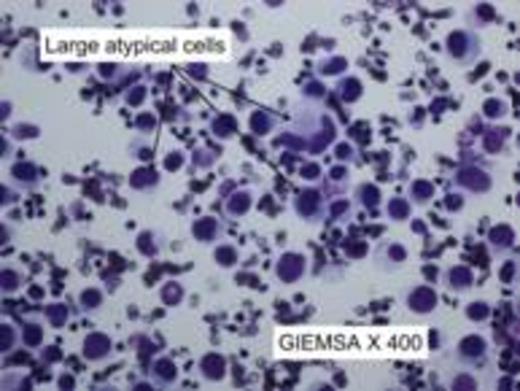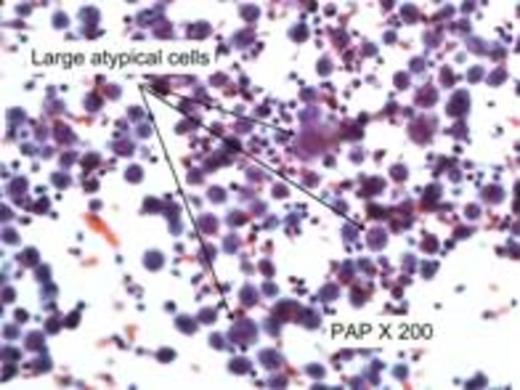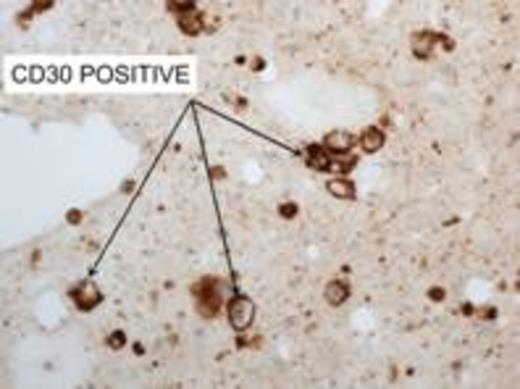Abstract
A 29 underwent bilateral cosmetic breast augmentation 10 years previously (McGhan Textured Round 400 mL implants). Six months before, she developed slowly progressive right breast pain and inflammatory signs associated with fluid collection around the right breast that was drained. A yellow cloudy fluid was examined and showed atypical large lymphoid cells. The cell block prepared in another institution showed numerous lymphoid cells including large atypical cells with lobated nuclei. PET CT scan was negative, same as bone marrow aspirate and trephine for lymphoma infiltration. Following bilateral removal of the breast implants, further histopathology studies showed no infiltration by lymphoma of the breast capsules or scar tissue. However, right breast peri prosthetic fluid microscopy showed a population of single malignant cells with scanty cytoplasm, numerous mitosis, and nuclei showing single and multiple nucleoli. Some cells showing horseshoe nuclei. The malignant cells were positive for CD30 and LCA and negative for CD20, CD68, AE1-3, and ALK 1. FISH for ALK was not possible (Fig 1)
A and B, show presence of large atypical lymphocytes with scanty cytoplasm and some with kidney shape nuclei. C, confirms the cells are strongly positive for CD30
A and B, show presence of large atypical lymphocytes with scanty cytoplasm and some with kidney shape nuclei. C, confirms the cells are strongly positive for CD30
Primary breast lymphomas are very rare conditions; they represent less than 1% of all NHL and less than 0.7% of all breast malignancies. There have been some cases reported in the medical literature of ALCL ALK- associated with breast implants. All the cases have been described in patients with textured implants, such as in this case and the reason is unknown. There are two main types of ALCL of the breast based on published case reports: a mass and an effusion. Primary breast effusion associated ALCL portends a good prognosis despite the fact that they are ALK-. The development of ALCL proximal to breast implants suggests that they are the result of an immune reaction to the silicone. Whether they represent true malignancy or a localised reactive phenomenon is not entirely clear yet. In previous case series, the condition has been described as indolent. However, given the low incidence of this condition and the limited literature available; it is difficult to know what the best treatment approach is. Following confirmation of the diagnosis, treatment options were discussed with the patient and the preferred option was active treatment with local radiation after removal of breast implants.
No relevant conflicts of interest to declare.
Author notes
Asterisk with author names denotes non-ASH members.




This feature is available to Subscribers Only
Sign In or Create an Account Close Modal